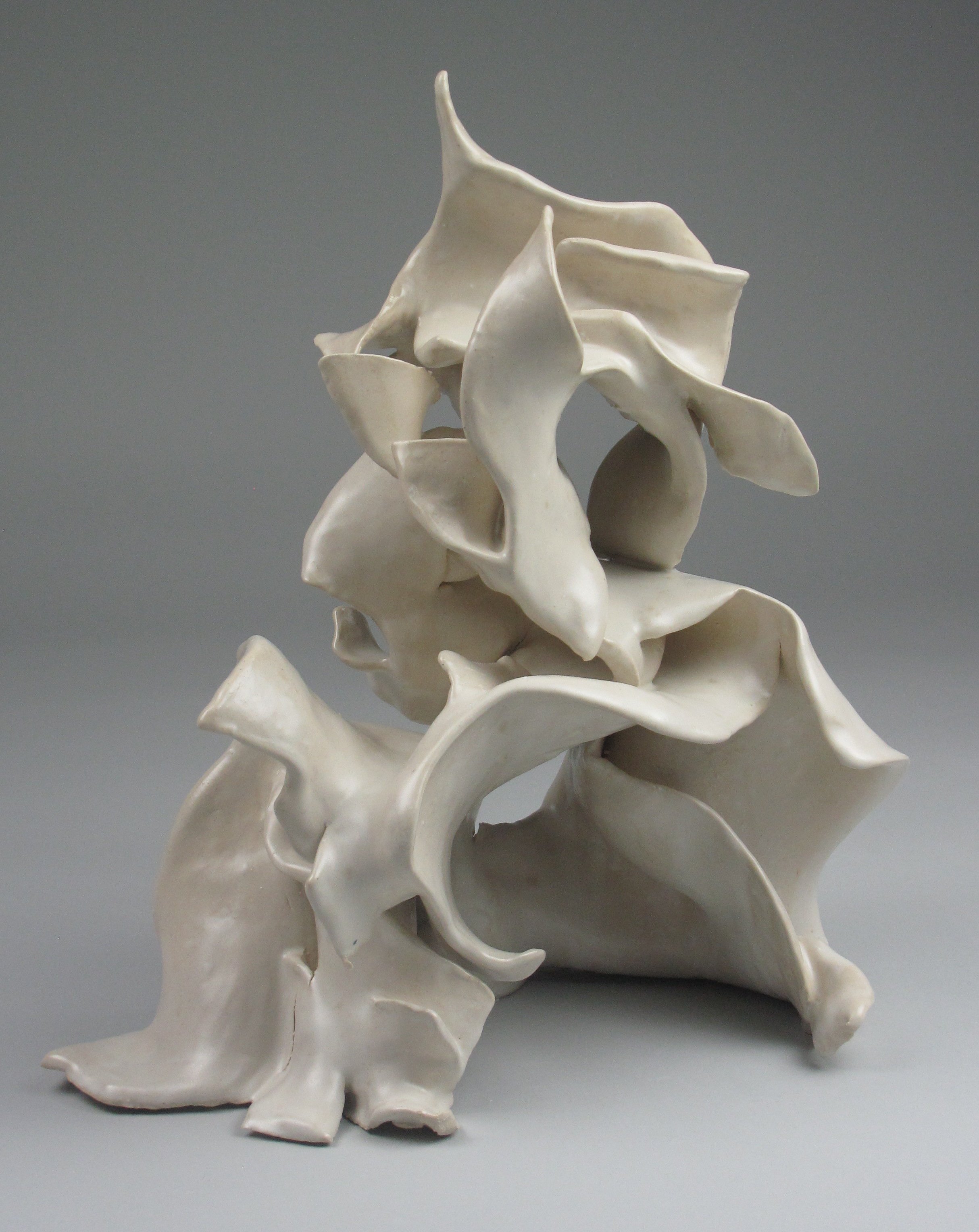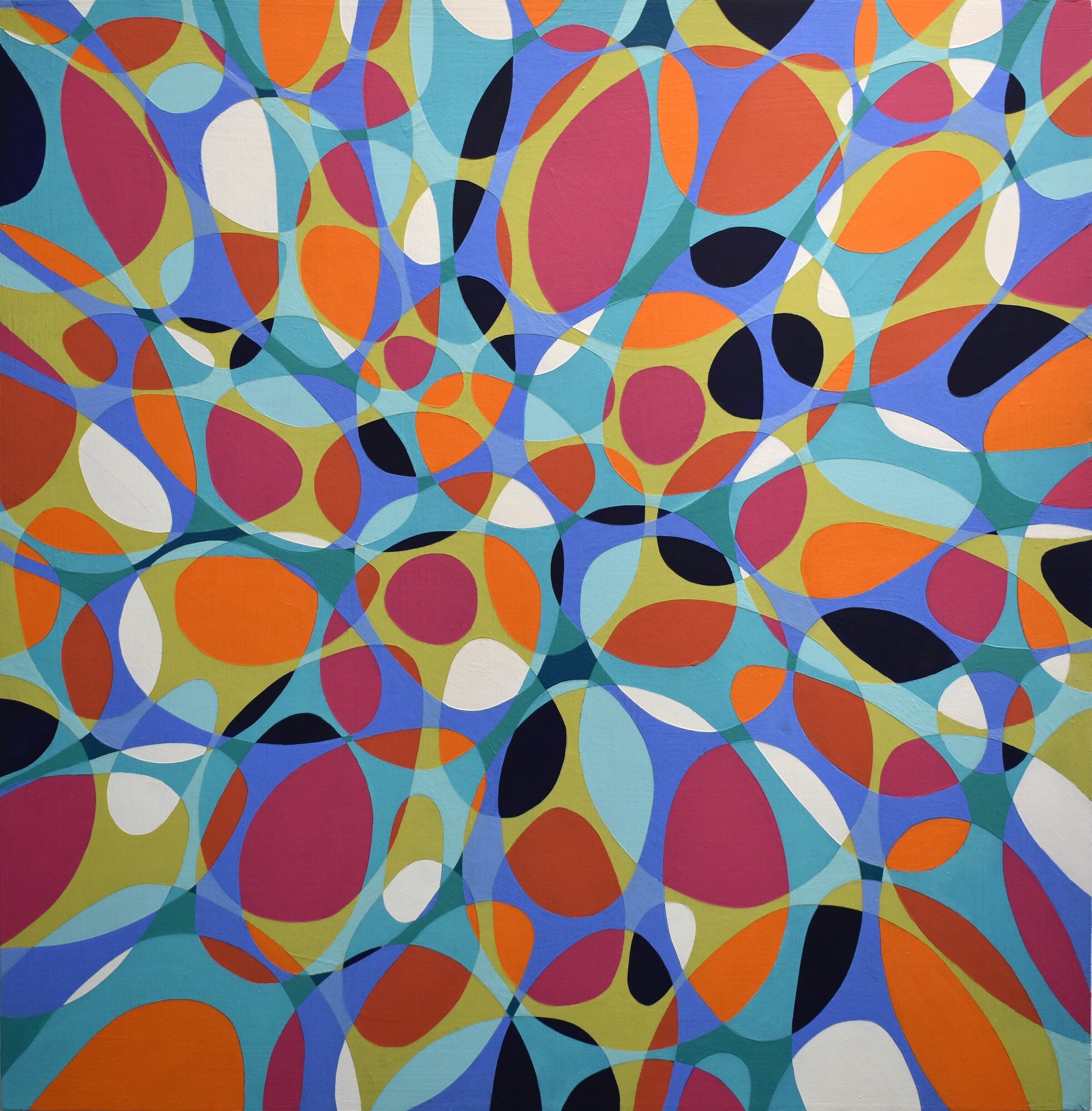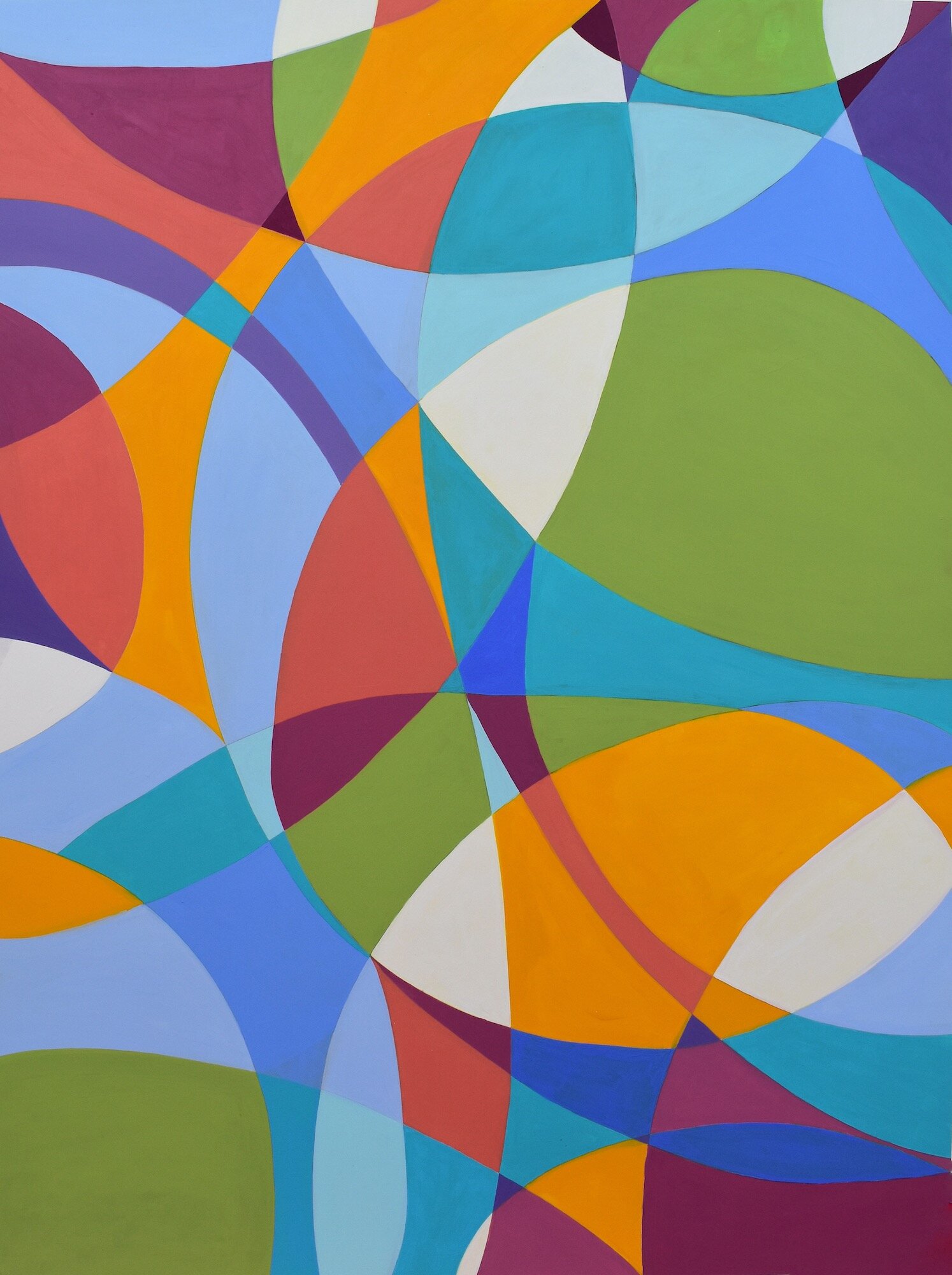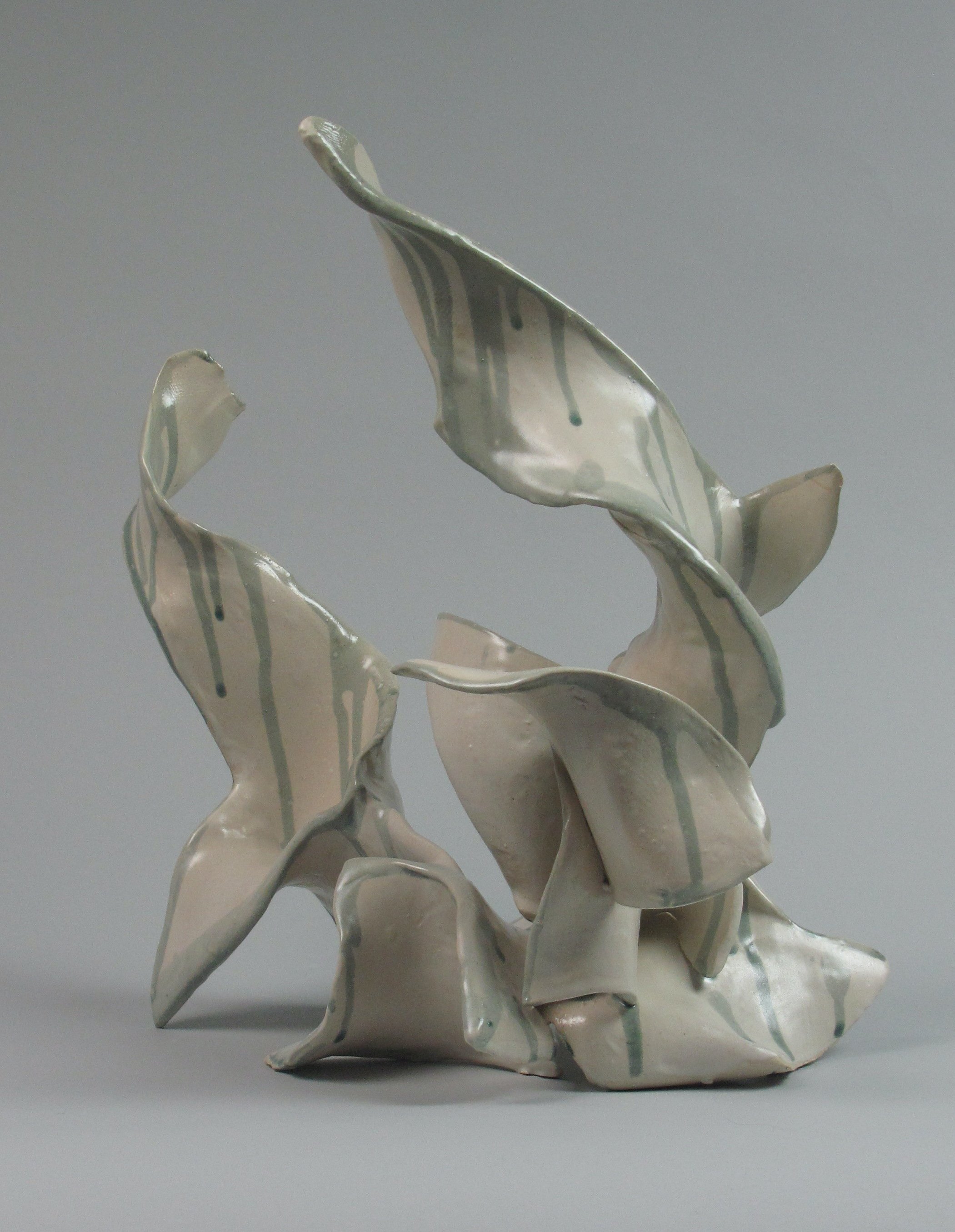Confluence: A conversation between the artists
This December in the main gallery we are featuring the work of Core Artists Denise Driscoll and Sara Fine-Wilson. The exhibition, Confluence, runs through December 19, 2021 with a meet the artist event on December 11 from 12–3pm. Below the artists compare and contrast their process and ideas.
DD: I would like to start this conversation by saying how thrilled I am to have our work together in the gallery. Installing began with the usual chaos that happens when lots of work is unpacked and the relationships are still unclear. Once Marie Craig helped us to edit, sort, and rearrange, the visual connections were undeniable.
Our show is sparkling and bright, energetic and calm—and filled with joy and harmony.
SFW: One of the things I find really interesting about your work is how you play with repetition, scale and density. In your piece Kinship 11 I notice that the range of scale and density creates a great sense of space and the sense of being entwined. In my piece, Arc, I also work with scale, density and repetition to emphasize form. Its interesting to see how similar characteristics can be used in both 2d and 3d form. Can you share some thoughts about these qualities?
DD: I love working with repeating forms. In this show, all of my paintings are based on overlapping ovals and the spaces between them. I was worried they might feel too repetitive as a group. But the repetition in your work is more organic, I feel your hands pressing these slabs of clay into sinuous forms that flow like water and flutter like leaves. Our work together creates a surprising counterpoint, a recent visitor said that “impressive conversations were happening” between your sculptures and my paintings.
SFW: Another thing I really love about your work is how you play with negative space. I particularly notice it in your piece, Confluence 3. The way the space inside the curves flips with the space outside the curves creates a sense of movement and gesture. In my piece, Runny, I am playing with negative space. I always think about how openings in my work can create movement. Can you share some thoughts about similarities or differences you might see in our work?
DD: In your work, I am drawn to how the curving forms interact with the negative spaces they contain, and the fluidity of this relationship as I move around each piece. A friend recently told me that she has started a practice of reading a single poem every day for a month, and finding that the poem grows and deepens as she spends time with it. Your sculpture invites a similar viewing across time, and rewards with a constantly changing sense of space and light. I often repaint areas over and over until the color is right, and a sense of depth or implied space emerges. What I do with color and shape, you do with space and shadow.
DD: Last summer, when we visited each other’s studios, i was excited to see your shelf of small models that you referred to as your “sketchbook.” I think we both use purposeful play to find our way into new work. How does play fit into the cycle of creation for you?
SFW: Playing with form and how it connects is really important for me. I like to to assemble and reassemble forms as a way to discover what they can become. This process allows for me to discover how 3d transformation can evolve in a different way than a 2d sketch.
DD: I hope we find opportunities to show our work together again, soon.





